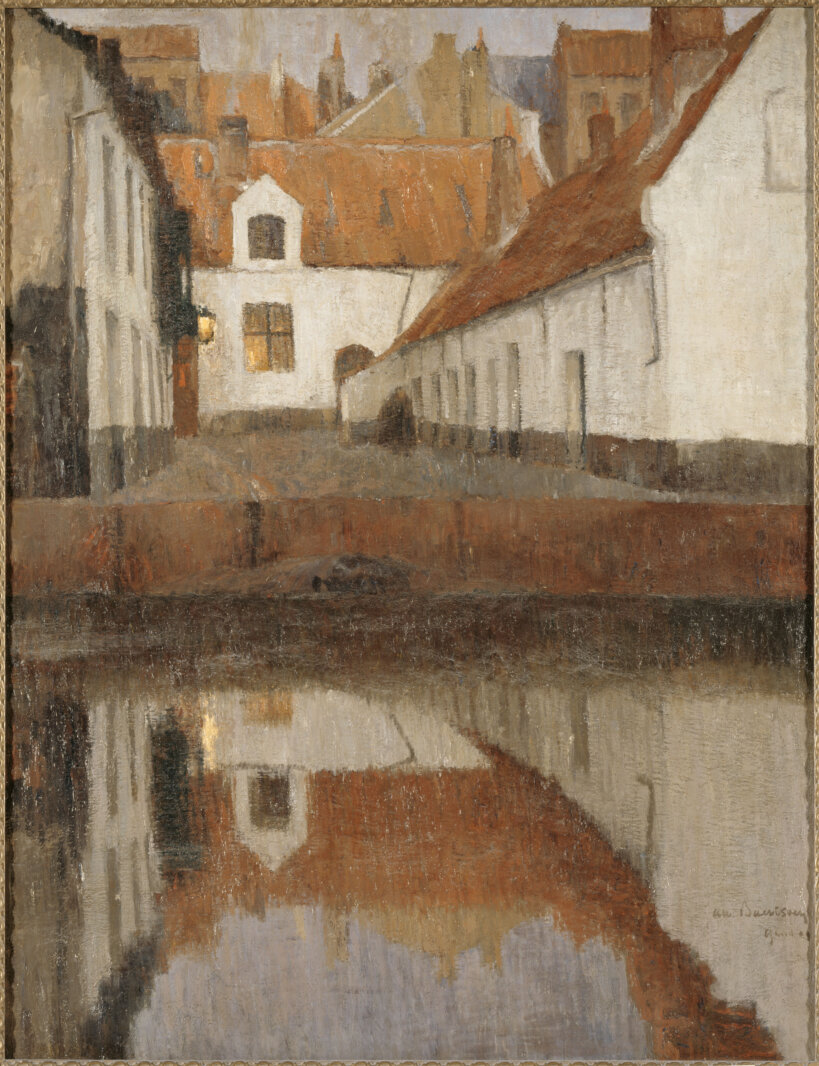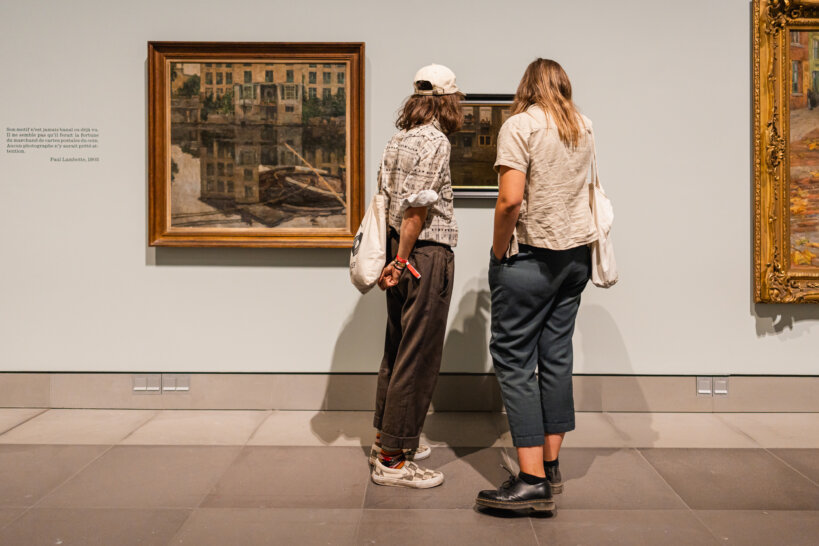To mark the 225th anniversary of the MSK Ghent and the 125th anniversary of the Friends of the Museum, the MSK Ghent will be celebrating for a year starting in September 2022. The opening exhibition of the festive year focuses on the oeuvre of painter, draughtsman and graphic artist Albert Baertsoen, an artist who played a remarkable role in the Ghent, Belgian and international art scene during the fin de siècle.
Around 1900, no artist at home or abroad was more associated with Ghent than Albert Baertsoen (1866-1922). As the son of a wealthy family of liberal textile manufacturers, the opportunities he had to develop his talent were rooted in the richness of Ghent as a leading textile centre. Baertsoen enjoyed international acclaim for the tranquil, melancholy impressions he made of his native city, which at the time was in full transformation.
He did not seek out picturesque corners, but expressed the unfathomable tristesse he experienced at the end and the transition. Baertsoen captured the feeling of uneasiness that characterised the fin de siècle and very quickly he, and especially he, became associated with the theme of 'the dead city', which at that time was also very prominent in literature. Baertsoen was considered the artistic counterpart of Georges Rodenbach and Maurice Maeterlinck.
In the contemporary international press, Baertsoen was given the honorary title of 'le peintre de Gand', but he was not only active in Ghent. As a pleinairist, in the second half of the 1880s he worked in the Scheldt estuary near Doel. Around 1892, the year that he organised a remarkable exhibition in Pulchri Studio in The Hague together with Emile Claus and Constantin Meunier, he painted impressionist canvases in the Leie region. From 1893 onwards, he produced a remarkable series of townscapes in Diksmuide, Nieuwpoort and Bruges.
In 1897 he had the Fafner built at the Jabon Frères shipyard in Amay (near Huy), a luxurious houseboat on which he travelled for many years to Zeeland; Terneuzen, Middelburg and especially Veere became his favourite holiday destinations in the summer. Still in the Netherlands, Dordrecht and Amsterdam also caught his attention. Equally surprising are the industrial landscapes that he made in the vicinity of Liege during the period 1906-08. Rarely does the artist seem to have worked so intensively in the open air as he did then.
The exhibition cannot ignore the complex creative process that lies at the basis of his oeuvre. Baertsoen always had drawing sheets to hand, on which he recorded motifs in pencil, but he also worked these out in virtuoso oil sketches. Both served - in his words - to learn the motif 'by heart', as a reminder to later explore the chosen scene in various versions and media. In this process, he explored the chosen motif further and further in large-scale studies, both in oil on canvas and in charcoal on paper.
Even the finishing and the exhibition of a version did not stop him from continuing to question himself and to put the same theme repeatedly on canvas in a monumental format. As an etcher, too, he enjoyed success in the international forum; his graphic oeuvre is perhaps the aspect of his artistry with which he is best known today.
During the First World War, London became his refuge. Unlike many other refugees, he felt at home there. He had been staying there regularly since 1890. It was to his credit that in his paintings and drawings he did not seek out the city centre, but rather the Bankside on the Thames, and that he depicted the immediate surroundings of the colossal bridges that connect the two parts of the city. Baertsoen looked at the surroundings from unusual perspectives, in mist, in rainy weather or at dusk, which sometimes gives the picture a threatening and sombre character.
In order to indicate the affinity, but also the characteristic uniqueness of his oeuvre, the exhibition also highlights Baertsoen's realisations next to those of his contemporaries such as Emile Claus, James Ensor, Henri Le Sidaner, Théo Van Rysselberghe and others, artists who greatly appreciated him - an artist friend par excellence, also of younger generations than his own. These contemporaries appreciated him as a driven supporter, who stood out throughout his career for his organisational talent and drive for independence, and who used his influence for the benefit of quality young artists.
As a much sought-after exhibitor in progressive circles such as La Libre Esthétique in Brussels, the Secession in Vienna and the Venice Biennale, he was a well-informed intermediary in the exhibition business and a generous personality with an impressive international network, who could count the most important domestic and foreign artists of his time among his friends.



























